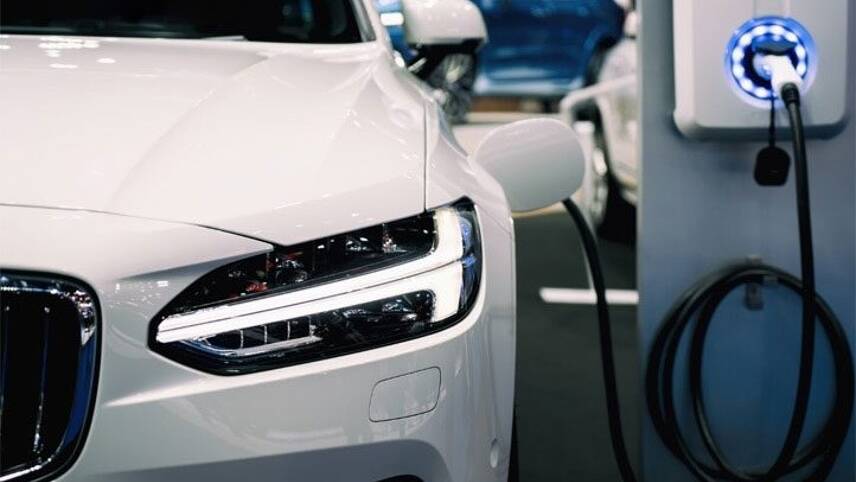Register for free and continue reading
Join our growing army of changemakers and get unlimited access to our premium content

Teased by the Department for Transport (DfT) late on Thursday (24 March) and published on Friday (25 March), the Strategy builds on the commitment made by the UK Government in 2020 for at least £1.3bn of investment in electric vehicle (EV) charging before the next General Election.
In terms of funding, the Strategy details an additional £500m of investment from Whitehall’s coffers into “high-quality” public charging infrastructure across the UK. £450m of this will be used to create a Local Electric Vehicle Infrastructure Fund (LEVI), under which local authorities will be able to bid for funding to install charging hubs and on-street charging points. The remaining £50m will be used to upskill and employ staff to work on public charging point planning and implementation.
Each local council will be able to bid for a share of £10m under the LEVI.
The launch of LEVI will doubtless be welcomed in principle; the Government has repeatedly been urged to provide local councils with more funding and powers to deliver their charging infrastructure commitments.
In launching the Strategy, the DfT is also reiterating the existing £950m commitment to the Rapid Charging Fund. This has been created with the aim of financing the installation of rapid charging points across England’s motorway network through to 2035.
The DfT has stated that its overarching ambition is to ensure that charging an electric vehicle (EV) will become cheaper and easier than refuelling a petrol or diesel car. It is estimating that England will quadruple its stock of rapid charging points by 2025. When all charging points are taken into account – rapid and otherwise – the Government is targeting a tenfold increase by 2030.
The Government has been keen to emphasise how the EV transition can be a solution to the current energy price crisis and accelerate the UK’s shift away from foreign fossil fuel imports. Yet, at the Spring Budget earlier this week, a 5p cut to road fuel duty was announced, which seems to contradict this rhetoric.
In a statement, the DfT said: “Even with recent trends in electricity prices, EVs still benefit from lower fuel, running and maintenance costs than their petrol and diesel equivalents and the strategy hopes to encourage drivers across the nation to make the switch. Production costs also continue to fall and some analysts expect purchase price parity with petrol and diesel cars to be reached well within the 2020s.”
The launch of the new Strategy comes six months after the DfT first began consulting on its key inclusions.
New responsibilities for charging network operators
As well as funding, the consultation asked for views on how to ensure that public charging networks are convenient, affordable and reliable – and that customers have adequate protections regarding network operators.
Under the Strategy, rapid charging point operators will be required to prove a 99% reliability rate or explain why they are not able to do so. There are also plans for a mandate requiring operators to provide accurate, real-time data on the availability and cost of their chargers. Additionally, operators will need to make sure customers can pay for their parking and charging using contactless cards.
Private sector action
To coincide with the publication of the strategy, BP is announcing a £1bn investment scheme for the development of its bp pulse EV charging network.
The energy major had already pledged to double the number of public chargers it operates in the UK, from 8,000 to 16,000, by 2030. It purchased the majority of the chargers it currently operates through its acquisition of Chargemaster in 2018.
With the additional funding, the firm should be able to grow its network to 24,000 chargers this decade.
bp pulse’s senior vice-president Richard Bartlett said the investment is “vital to provide the charging infrastructure the UK needs”.
A report published by Policy Connect last spring revealed that the UK’s annual charging point installation rate stood at just one-fifth of the levels needed to support the levels of EV uptake the Government is forecasting.
The business guide to fleet electrification
edie has this week published a new business guide detailing everything you need to know about integrating electric vehicles (EVs) into your organisation’s fleet on the road to net-zero.
Developed in partnership with E.ON, this free-to-download report provides an end-to-end overview of EVs for UK businesses seeking to accelerate the transition, with information on all parts of the EV journey, from identifying and investing in the right EV models through to developing charging infrastructure and adopting innovative ‘vehicle-to-grid’ approaches.
Click here to download your copy.
Sarah George


Whereas I am very pleased to see such an aggressive transition to green and cleaner energy the technology is racing away from the safety infrastructure needed to support this. EV car fires although rare pose a whole array of environmental and public health hazards. Exactly the same with the introduction of E10 fuel and its risk to water quality.